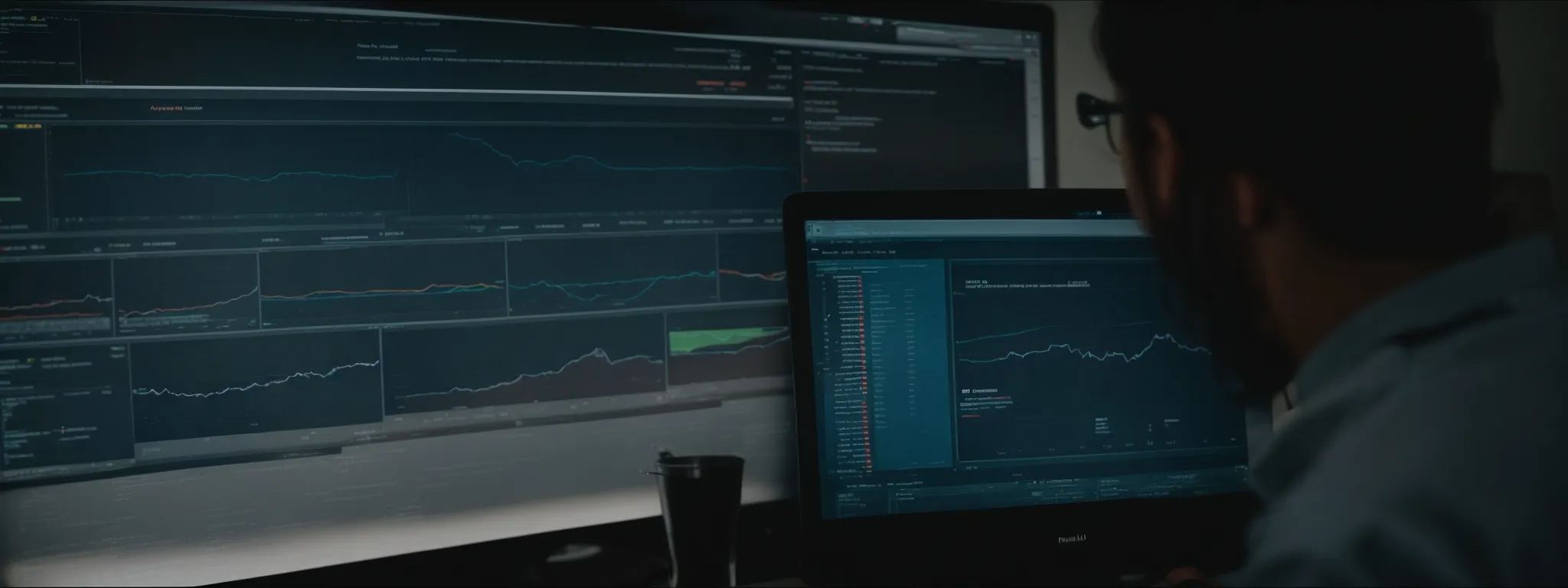What Is Conversion Rate Optimization
Understanding Conversion Rate Optimization: A Comprehensive Guide In the dynamic landscape of digital marketing, Conversion Rate Optimization (CRO) stands out as the strategic fulcrum that can pivot […]
Understanding Conversion Rate Optimization: A Comprehensive Guide
In the dynamic landscape of digital marketing, Conversion Rate Optimization (CRO) stands out as the strategic fulcrum that can pivot the potential of a website into actual customer engagement and sales.
The essence of CRO lies in optimizing every element of a digital presence to encourage visitors to take the desired action, be it a product purchase, signing up for a newsletter, or downloading an e-book.
This comprehensive guide will navigate through the methodologies and tools that sculpt an effective CRO strategy, illuminating the psychological triggers and data-driven insights that can transform passive site visitors into active customers.
Keep reading to explore the multifaceted approach to CRO that could revolutionize your digital footprint and dramatically amplify your bottom line.
Key Takeaways
- Conversion Rate Optimization Is an Art and Science That Involves Understanding User Behavior to Enhance Conversions
- LinkGraph’s SearchAtlas SEO Software and Free SEO Audit Provide Tools for Effective CRO Strategies
- A/B Testing Is Essential to Determine the Most Effective Website Elements for Increasing Conversions
- Mobile Optimization, Persuasive Copywriting, and Strategic Web Design Are Crucial for Converting Site Visitors Into Customers
- Emerging Technologies Like AI, Personalization, and Voice Search Adaptation Are Shaping the Future of CRO
Decoding Conversion Rate Optimization for Beginners

Conversion Rate Optimization (CRO) stands as the cornerstone in the realm of digital marketing, providing a strategic approach that enhances the probability of visitors completing a desired action on a website.
Constructing a coherent understanding of CRO begins with recognizing its pivotal role in aligning website functionality with user expectations.
It is not simply about increasing numbers; it’s about cultivating an experience that resonates with the user’s intent.
This journey unravels through the precise measurement of key metrics that signal user engagement and satisfaction.
Exploring these metrics, paired with an in-depth analysis of the customer journey, equips marketers with the insights to fine-tune their strategies.
Insightful tweaks to a website can systematically guide the audience from initial intrigue to the final stages of the sales funnel, thereby leaving a profound impact on conversion rates.
Defining CRO and Its Significance in Digital Marketing
Conversion Rate Optimization (CRO) offers a pivotal compass for marketers to navigate the ever-evolving landscape of digital marketing. Central to this discipline is the focus on maximizing the efficiency of a website or landing page, ensuring that a higher percentage of site visitors perform the actions that correlate with the business’s objectives, such as making a purchase, signing up for a newsletter, or filling out a contact form.
Integral to the fabric of digital marketing, CRO’s importance cannot be overstated. By leveraging meticulous CRO strategies, businesses have the capacity to significantly elevate their return on investment (ROI). It connects the dots between user behavior and revenue, allowing companies to absorb and implement user feedback into tangible, profit-driving website enhancements, creating a synchronous ecosystem of user-centered design and business growth.
Identifying the Key Metrics of Conversion Optimization
Grasping the intricacies of Conversion Rate Optimization requires a keen awareness of specific key metrics that shine a light on user interaction within a website. From visitor behavior to conversion goal achievements, these performance indicators serve as the framework for assessing the effectiveness of CRO strategies.
Metrics such as bounce rate, pageviews, and conversion rates represent the fulcrum of CRO analytics. Through diligent observation, these figures narrate a detailed story of where a website is capturing interest and where potential customers might be slipping through the cracks:
| Metric | Description | Impact on CRO |
|---|---|---|
| Bounce Rate | The percentage of visitors who leave after viewing only one page | Indicates engagement levels and points to the need for better content or UX |
| Pageviews | The total number of pages viewed by all visitors | Reflects content relevance and site structure efficacy |
| Conversion Rate | The percentage of visitors who take a desired action | A direct measure of a site’s ability to turn visitors into customers or leads |
These metrics provide the roadmap for understanding the customer journey and identifying choke points where optimization can lead to significant improvements in website performance.
Understanding the Customer Journey and Its Impact on CRO
The customer journey extends beyond mere analytics; it embodies the narrative arc of interaction a user has with a brand, from discovery through to conversion. In the sphere of digital marketing, comprehending this journey is vital as it influences every touchpoint that could lead to a conversion, whether it’s the nuances of product page design or the persuasive power of a well-crafted call-to-action (CTA).
Understanding and refining the customer journey is crucial to CRO because it ensures each step aligns with the user’s needs and progresses them towards the conversion goal. When digital marketing solutions like LinkGraph’s SearchAtlas SEO software are employed, they offer precision in tailoring the journey, enhancing user experience, and thus, catalyzing an increase in conversion rates.
The Science Behind Conversion Rate Optimization

Peering into the mechanics of Conversion Rate Optimization unveils a data-driven and psychologically attuned discipline that sits at the confluence of technology and human behavior.
Harnessing the meticulous analysis of visitor engagements, the subtle application of Psychological Triggers, and the empirical rigors of A/B testing, Conversion Rate Optimization stands as both art and science.
This intricate process involves delving into how users interact with a site, employing cognitive strategies to subconsciously encourage a progression towards conversion and relentlessly testing variations to distill the essence of effectiveness.
Together, these elements form the backbone of a sophisticated CRO strategy, embodying the pursuit to not merely understand, but to anticipate and influence the paths that customers choose to take.
Analyzing Visitor Behavior to Boost Conversions
Analyzing visitor behavior stands as a crucial aspect of Conversion Rate Optimization, providing actionable insights into how users navigate a website. By employing tools like SearchAtlas by LinkGraph, marketers can track visitor movements, clicks, and overall engagement patterns to identify areas where the website’s design or content may be hindering conversions.
Understanding the nuances of user interaction enables informed decisions on website modifications, from restructuring the layout to refining the messaging within CTAs. LinkGraph’s sophisticated analytics allow digital marketers to make data-backed enhancements that resonate with the audience, ultimately driving up conversion rates and bolstering the bottom line.
How Psychological Triggers Can Improve Conversion Rates
Integrating psychological triggers into digital marketing strategies is a proven way to boost conversion rates. Techniques such as scarcity, urging users to act quickly to avoid missing out, or social proof, showcasing customer testimonials, can effectively motivate site visitors towards taking the desired action. When expertly executed, these triggers can create a sense of urgency and credibility that aligns with the user’s emotional drivers, resulting in a higher likelihood of conversion.
Employing psychological triggers bridges the gap between user behavior and persuasive communication. For instance, personalized content that resonates with a visitor’s interests can establish a connection that feels bespoke and considered, encouraging further engagement and, ultimately, conversion. These strategies tap into the underlying motivations that prompt user decisions, tailoring the experience to meet psychological needs and optimize website performance.
The Role of a/B Testing in Effective CRO Strategies
A/B testing operates as the empirical backbone of Conversion Rate Optimization, enabling marketers to make informed decisions backed by direct user feedback. Through this scientific approach, distinct variations of web elements, such as headlines, images, or buttons, are presented to different segments of website traffic, determining which version stimulates a higher rate of conversion.
This Methodology Is Vital in Refining the efficiency of a digital presence, as it eradicates guesswork and empowers businesses with clarity on which changes yield the most potent improvements in user experience and conversion rates. A/B testing anchors the CRO process, providing a methodical framework for continuous improvement and optimization.
Crafting a Successful Conversion Optimization Strategy

In the intricate dance of digital marketing, Conversion Rate Optimization (CRO) serves as a masterful choreographer, guiding the myriad elements of a website to harmonize in a performance that culminates in the audience’s desired action.
To orchestrate such a symphony requires a strategic blueprint – one that is meticulously drafted and deftly executed.
For businesses intent on mastering CRO, the development of a structured plan is an indispensable first step.
This plan involves charting a path defined by clearly set objectives, diligently prioritized actions that blend potential impact with feasibility, and a steadfast commitment to the art of continual refinement.
As companies embark on this critical journey, understanding the foundational tenets of crafting a successful Conversion Optimization Strategy is paramount.
Step-by-Step Guide to Creating a CRO Plan
Developing a robust Conversion Rate Optimization plan commences with a comprehensive audit to identify areas for improvement. Specialists utilize tools like LinkGraph’s free SEO audit to analyze current website performance, emphasizing issues that may be stifling user engagement or obstructing the path to conversion.
Subsequent to the initial audit, the creation of targeted strategies tailored to the identified challenges becomes the crux of a successful CRO plan. This includes Setting Specific, Measurable Goals for each conversion point and employing conversion rate optimization tools provided by platforms such as SearchAtlas by LinkGraph for fine-tuning the website’s elements to better serve the user’s journey to conversion.
Establishing Clear Objectives for Your CRO Efforts
Embarking on the quest for superior Conversion Rate Optimization begins with the vital step of crystallizing clear objectives. It is essential for businesses to set forth precise, quantifiable goals, such as augmenting the number of completed purchases or elevating subscription rates, each serving as a beacon to steer their CRO endeavors purposefully.
Once established, these objectives must be intricately connected with the overall marketing strategy, ensuring every effort in conversion optimization is seamlessly aligned with the company’s vision for growth and customer engagement. This synchronization affords clarity across all teams involved and propels a unified push towards enhancing the digital customer experience.
Prioritizing Actions Based on Potential Impact and Ease
In Conversion Rate Optimization, the discernment in selecting which actions to prioritize can greatly influence the effectiveness of a strategy. A Methodical Approach Requires Evaluating each potential change’s impact on conversion against the resources needed to implement it, thereby optimizing for both efficiency and efficacy.
Organizations benefit immensely when they concentrate their efforts on adjustments that promise substantive improvements in user experience and have the potential to significantly move the needle on conversion rates, especially when these can be achieved with relatively low investment of time or capital.
Mastering the Art of Conversion Through Web Design

In the digital marketplace, the influence of website design on user experience and conversion rates is undeniable.
It operates as a silent yet persuasive salesman, where carefully selected design elements can either invite the user further into the site or deter them from engaging further.
Grasping the principles of effective web design becomes indispensable for optimizing conversion rates.
Businesses must not only consider the aesthetic appeal but also the usability and functionality of their online presence, especially on mobile devices, where a substantial portion of web traffic originates.
Moreover, the strategic application of color psychology and visual hierarchy plays a significant role in guiding visitor attention and prompting decisive action.
These facets of web design are integral in creating an environment conducive to converting casual site visitors into loyal customers.
Design Elements That Influence Conversion Rates
Within the digital marketplace, web design emerges as a strategic factor in facilitating conversions. A user-centric layout, clear navigation, and compelling visuals are indispensable elements that serve to lower barriers to engagement, thereby increasing the likelihood of site visitors completing a conversion activity.
The strategic application of color schemes, typography, and imagery plays a critical role in driving user attention towards key calls-to-action (CTAs). A well-designed CTA button, for instance, stands out on the page, inviting clicks with persuasive clarity, while fostering an intuitive flow through the conversion funnel.
The Importance of Mobile Optimization in CRO
In the digital age, mobile optimization is a critical facet of Conversion Rate Optimization (CRO), with a significant volume of web traffic stemming from mobile devices. A site that is not mobile-friendly tends to deter users, which can lead to diminished conversion rates and a poor user experience.
Adapting a website to be mobile-responsive ensures that layout, text, and interactive elements translate seamlessly across different screen sizes. For businesses aiming to optimize conversions, prioritizing a mobile-optimized design is essential, as it facilitates ease of navigation and accessibility, enticing users towards conversion.
Leveraging Color Psychology and Visual Hierarchy
Color psychology and visual hierarchy are not mere aesthetic concerns; they embody strategic elements that sway user behavior and decision-making. By deploying specific colors, a website can evoke emotions or call attention to critical conversion areas like signup forms or purchase buttons, facilitating an intuitive user experience that propels the user towards action.
Moreover, the strategic layering of visual elements according to their importance, known as visual hierarchy, guides the user’s eye through the content effortlessly. This methodical arrangement ensures users can navigate with minimal cognitive strain, significantly enhancing the likelihood of converting casual browsers into active customers or leads.
Conversion Optimization Through Persuasive Copywriting

In the intricate world of digital marketing where the click of a button can signal a successful conversion, the power of words becomes a transformative tool.
Persuasive copywriting is a critical component in Conversion Rate Optimization, anchoring itself in the ability to captivate and engage the audience while guiding them towards making informed decisions.
Engaging headlines, clear and concise language, and compelling calls to action are not mere elements of content; they are strategic instruments designed to tip the scales in favor of positive user action.
This fundamental aspect of digital strategy thrives on the eloquence of well-crafted copy that speaks directly to the core desires and needs of prospective customers, setting the stage for enhanced conversion rates.
Writing Compelling Headlines That Drive Conversions
The art of crafting headlines that capture attention and propel conversions is an exercise in precision and allure. The headline is the visitor’s first encounter with website copy, serving as a decisive factor in whether they choose to engage further or click away: it is the siren song enticing the visitor deeper into the website’s embrace.
| Headline Purpose | Description | Impact on Visitor Engagement |
|---|---|---|
| Attention-Grabbing | A headline crafted to immediately capture interest | Compels the visitor to read on and explore more content |
| Conversion-Driven | A headline designed to resonate with the visitor’s desires or pain points | Inspires the visitor to consider the value proposition and take action |
Effective headlines are a strategic blend of relevance and curiosity. They must not only resonate with the target audience’s interests but also provoke intrigue, compelling them to delve into the content. The headline stands as the threshold between the visitor and the conversion, shaping the narrative that follows.
The Power of Clarity Over Cleverness in Conversion Copy
The realm of digital marketing recognizes the compelling force of clarity in copywriting. When the message is unequivocal, the path to conversion is illuminated, facilitating a smoother journey for the consumer to the point of commitment.
Employing direct and coherent language transcends the allure of wordplay, ensuring that the user comprehends the value proposition without ambiguity. This straightforward approach underpins the principle that a clear message is pivotal in optimizing conversion rates, as it fosters decisive action from potential customers.
Crafting Calls to Action That Convert
In the intricate pursuit of higher conversion rates, the call to action (CTA) emerges as a pivotal element, serving as the final nudge guiding users toward the desired outcome. Crafting a CTA that converts is an exercise in clarity and persuasion: It must be conspicuous, offering a straightforward path to conversion while resonating with the user’s intent and desire.
- A successful CTA uses imperative language that spurs action, such as “Register Now” or “Get Started.”
- It is strategically placed in points of high user engagement to catch the eye at the moment of decision-making.
- The design and color contrast play critical roles, making the CTA stand out visually from the surrounding content.
Moreover, optimizing CTAs is not a one-size-fits-all task; each must be tailored to the specific context and audience, accounting for the nuances of user behavior and preferences. By harnessing the power of A/B testing, businesses can refine their calls to action, ensuring they strike the right chord with the audience and maximize the potential for conversions.
Key Components of a High-Converting Landing Page

In the digital age, the landing page functions as the gateway through which potential customers enter a business’s online domain.
Creating a landing page with a high conversion rate necessitates a mix of strategic design and content elements that together, create a seamless and persuasive user experience.
This involves crafting structural components that guide site visitors with ease, optimizing forms to reduce friction and improve completion rates, and integrating social proof to build trust and affirm the brand’s credibility.
Each of these components are critical in optimizing a landing page – they are not just facets of design, but powerful conversion tools that, when executed proficiently, can significantly amplify a business’s online success.
Structural Elements of an Effective Landing Page
The architecture of a landing page is foundational to its success in converting visitors. It begins with a clear and concise layout, which enables site visitors to navigate the page intuitively, with elements such as a headline, subheadings, and images strategically positioned to guide the eye and reinforce the message.
At the heart of these structural elements lies a harmonious balance between compelling aesthetics and practical functionality. An effective landing page is designed to reduce distractions and focus the visitor’s attention on the value proposition, amplifying the likelihood of taking the desired action in a frictionless environment.
Optimizing Forms for Higher Completion Rates
Optimizing forms is pivotal to curtailing abandonment and augmenting conversion rates on landing pages. By simplifying form fields, ensuring only necessary information is requested, and embedding clear, actionable labels, businesses pave a more direct route to customer completion, markedly improving the efficacy of their landing pages.
Employing real-time validation cues and succinct error messaging can significantly enhance the user experience during form completion. This minimizes user frustration and confusion, leading to increased completion rates and reinforcing a positive interaction with the brand, which is vital in realizing a successful conversion rate optimization strategy.
Incorporating Social Proof to Enhance Trust and Conversions
In the intricate web of factors contributing to a high-converting landing page, incorporating social proof emerges as an elite strategy to amplify trust and enhance conversion rates. Testimonials, ratings, and endorsements serve as tangible evidence of a business’s reputation and quality, subconsciously reassuring the visitor that their choice to engage is validated by others’ positive experiences.
Social proof leverages the psychological tendency for individuals to conform to the actions of others, making it a nuanced yet powerful tool that, when integrated effectively, can encourage visitors on a landing page to transition from consideration to action. Peer reviews, user-generated content, and case studies can act as decisive factors that fortify the user’s confidence in a product or service, thereby directly influencing the rate of conversions.
Analyzing Data to Inform Conversion Rate Strategies

In the realm of digital marketing, mastering Conversion Rate Optimization (CRO) demands not only creativity but also a deep reliance on data analysis.
The symbiotic relationship between data insight and strategic action forms the backbone of successful CRO endeavors.
Marketers must analyze an extensive range of user data points, from behavior patterns to conversion pathways, to uncover hidden opportunities for optimization.
This introductory paragraph is a gateway to understanding the pivotal process of translating raw data into actionable steps that propel the rate of conversions.
Topics such as evaluating essential metrics for CRO success, employing heatmaps and session recordings for deeper insight, and harnessing the power of data-driven decisions will be imperative in sculpting a website that doesn’t just attract visitors but effectively converts them into customers.
Essential Metrics to Track for CRO Success
For businesses to conquer the elusive realm of Conversion Rate Optimization, tracking the right metrics is non-negotiable. Critical metrics such as conversion rates, average time on page, and customer acquisition cost provide a detailed overview of performance, exposing actionable insights that can directly improve CRO initiatives.
Measurement tools integral to platforms like SearchAtlas by LinkGraph enable marketers to monitor these essential metrics meticulously, crafting data-led strategies that bolster the conversion journey’s effectiveness. By understanding and quantifying user interactions from entry to exit, organizations can precisely tailor their optimization tactics to match the nuances of their audience’s behavior.
Utilizing Heatmaps and Session Recordings
Heatmaps and session recordings are invaluable tools for unlocking the nuances of user behavior on a website. These visual data representations enable marketers to observe firsthand how visitors navigate their site, highlighting areas of interest, confusion, or abandonment.
| Tool | User Behavior Insights | Impact on CRO |
|---|---|---|
| Heatmaps | Illustrate where users click, pause, and scroll | Identifies hotspots that attract engagement or sections that may require optimization |
| Session Recordings | Present real user journeys through the website | Provides context to analytics, revealing the reasons behind user actions or inactions |
By leveraging these tools, businesses can streamline their user experience, optimize key website elements, and strategize with precision. Masking areas of frustration or confusion becomes feasible, making session recordings particularly effective for improving navigation flows and reducing obstacles on the path to conversion.
Making Data-Driven Decisions to Improve Conversion Rates
To propel conversion rates, digital marketing thrives on the implementation of data-driven decisions that emerge from meticulously analyzing user data. The strategic employment of tools like SearchAtlas by LinkGraph affords businesses the ability to distill complex user data into actionable insights, forming the foundation for optimization tactics that resonate powerfully with target audiences. With an empirical approach, marketers can iteratively test and refine website elements, ensuring each adjustment is a calculated step toward enhancing conversion rates.
Embracing an analytics-driven mindset equips companies with a distinct advantage for optimizing their online presence. By prioritizing decisions grounded in robust data, organizations transcend guesswork and subjectivity, overlaying a layer of precision to their digital marketing strategies. Accurate interpretations of data pave the way for tailored interventions that sharpen user experience and amplify the probability of conversion–a testament to the potent influence of informed decision-making within the realm of Conversion Rate Optimization.
Overcoming Common Challenges in Conversion Optimization

In the continuously evolving terrain of digital marketing, Conversion Rate Optimization stands as a beacon guiding marketers toward the fulfillment of online potential.
As businesses grapple with the multifaceted aspects of encouraging website visitors to convert, common hurdles such as cart abandonment, the intricacies of multivariate testing, and the drive to deliver a unified customer experience across various platforms frequently emerge.
This section delves into the crux of these challenges, shedding light on actionable solutions that not only address these issues but also harness their complex nature to refine CRO strategies and achieve exceptional results.
Addressing Issues of Cart Abandonment
Confronting the issue of cart abandonment requires a systematic review of the checkout process to identify friction points that may deter completion. Digital marketers employ strategic tweaks, such as streamlining the number of steps to purchase or offering multiple payment options, to ensure a seamless and inviting transaction experience for customers.
Effective measures like incorporating trust signals, such as security badges, and transparent communication regarding shipping costs and delivery times, can significantly mitigate cart abandonment. These adjustments serve to build user confidence throughout the purchasing journey, thereby increasing the likelihood of conversion and bolstering overall digital marketing effectiveness.
Navigating the Complexities of Multivariate Testing
Navigating the complexities of multivariate testing is akin to deciphering a multi-layered puzzle; it requires precision in planning and execution. Running concurrent tests across multiple variables provides a comprehensive landscape of how different elements interact and contribute to the user experience and conversion rates.
However, marketers must be wary of data dilution and interaction effects that could cloud the clarity of actionable insights. Multivariate testing demands a strategic approach, ensuring sufficient traffic volume and segment differentiation to achieve statistically significant results that clearly indicate which combinations enhance performance:
- Identify the key components on the page to be tested, such as headlines, images, and CTAs.
- Design a series of different variations where these elements are combined in various ways.
- Ensure that the test runs for a duration that allows enough data collection for accurate analysis.
- Analyze the results to determine which element combinations yield the best conversion improvements.
- Implement the most effective combinations and continuously refine through subsequent tests.
Ensuring Consistent Experiences Across All Touchpoints
In an era where customers interact with brands across a variety of platforms, ensuring a consistent experience becomes a critical aspect of Conversion Rate Optimization. Whether a visitor lands on a mobile app, a social media page, or the main website, the messaging, aesthetics, and ease of use should all convey the same quality and intention.
Companies must meticulously synchronize their digital marketing efforts to deliver an omnichannel experience that remains seamless and fluid, regardless of the touchpoint. This unified approach solidifies brand identity, fosters trust, and sustains user engagement, thereby enhancing the likelihood of conversion at every interaction.
Future Trends in Conversion Rate Optimization

As the digital landscape undergoes constant transformation, Conversion Rate Optimization (CRO) evolves, driven by emerging technologies and changing user behaviors.
Recognizing the onward march of innovation is vital for any business aiming to maintain a competitive edge and optimize online interactions effectively.
The integration of artificial intelligence and machine learning into CRO marks a significant shift towards more dynamic, intelligent website enhancements.
Paired with the increasing emphasis on personalization, these advancements signal a period of rapid development and opportunity within digital marketing.
Meanwhile, voice search capabilities are poised to redefine user engagement, making it essential for companies to adapt their conversion strategies to the growing prevalence of voice-activated devices.
These burgeoning trends shape the future narrative of CRO and hold the keys to navigating the complexities of an increasingly technologically sophisticated marketplace.
The Impact of AI and Machine Learning on CRO
The advent of AI and machine learning heralds a new epoch in Conversion Rate Optimization, equipping marketers with tools that seamlessly predict and personalize user experiences. These technologies digest vast amounts of data, uncovering patterns and automating decision processes to optimize conversion rate strategies more effectively.
Incorporating machine learning algorithms into CRO means targeting becomes less of guesswork and more of science: systems refine user segmentation and content delivery in real-time, leading to a profound increase in conversion efficiency.
- AI-driven chatbots anticipate user queries, offering timely support that can nudge users towards conversion.
- Personalization engines powered by machine learning create uniquely tailored website experiences that significantly enhance user engagement and conversion potential.
- Advanced predictive analytics forecast user behavior, allowing for preemptive optimization that aligns directly with evolving user needs.
Personalization Tactics to Watch in the Coming Years
The dawn of personalization in Conversion Rate Optimization beckons an era where user experience becomes exquisitely tailored to individual preferences. Marketers are poised to leverage emerging algorithms that parse granular user data, enabling dynamic content curation and offer personalization to amplify engagement and drive up conversion rates.
Anticipated advances in artificial intelligence will refine the sophistication of personalization tactics, allowing digital marketing solutions to predict and adapt to user behavior in real-time. These cutting-edge strategies promise to transform how businesses interact with their audience, fostering deeper connections and yielding substantial improvements in conversion efficiency.
Preparing for Voice Search and Its Effect on Conversion Rates
As the ubiquity of voice-activated devices grows, preparing for voice search becomes a critical component of Conversion Rate Optimization (CRO). Adapting CRO strategies to accommodate voice search queries implies not only optimizing for conversational keywords but also for more natural language patterns.
Businesses gearing up for this shift will witness voice search influencing conversion rates as users seek immediate solutions and swift navigational capabilities. Crafting content that aligns with voice search behaviors ensures that businesses remain relevant and accessible in a vocal-command future:
- Integrate conversational keywords into content to mirror natural speech patterns.
- Structure information to provide quick, succinct answers ideal for voice search queries.
- Optimize local SEO strategies for businesses to capitalize on voice search’s tendency for local convenience.
Conclusion
Understanding Conversion Rate Optimization (CRO) is essential in the digital marketing sphere, as it focuses on maximizing a website’s efficiency and enhancing user experience to drive higher conversion rates.
By delving into key metrics such as bounce rate, pageviews, and conversion rates, marketers can decode user behavior and optimize their strategies effectively.
Through a combination of analyzing visitor interactions, employing psychological triggers, and conducting A/B testing, businesses can refine their websites to better align with customer journeys, ultimately increasing ROI.
A successful CRO plan involves setting clear objectives, prioritizing impactful actions, and continuously adapting based on data-driven insights.
Elements such as persuasive copywriting, well-designed CTAs, and optimized landing pages all contribute to a seamless user experience that promotes conversions.
As technologies evolve, incorporating advancements like AI, machine learning, and voice search will become crucial to staying competitive in conversion strategies.
In summary, a deep understanding of CRO empowers businesses to create targeted, efficient, and responsive digital experiences that cater to user needs and foster strong conversion rates.














































































